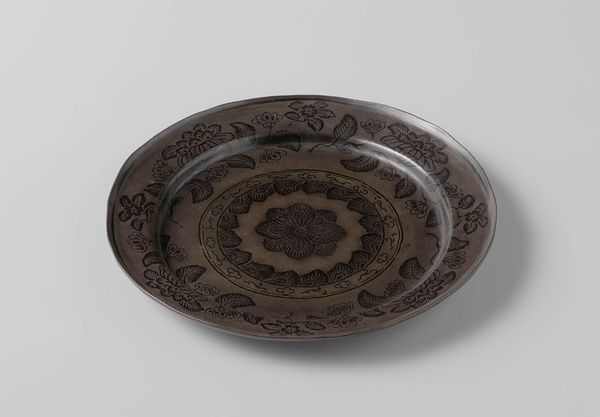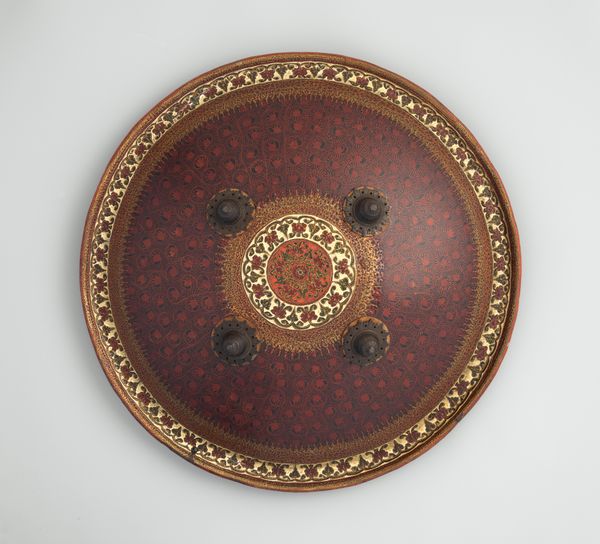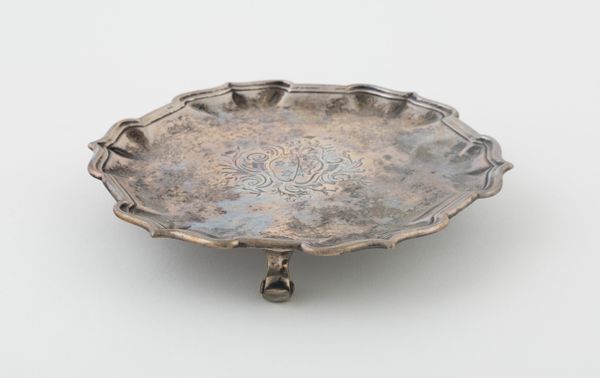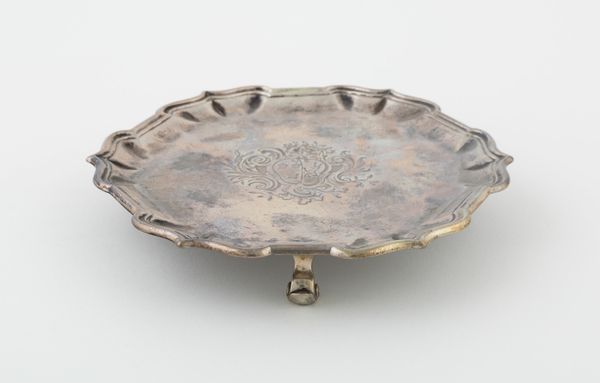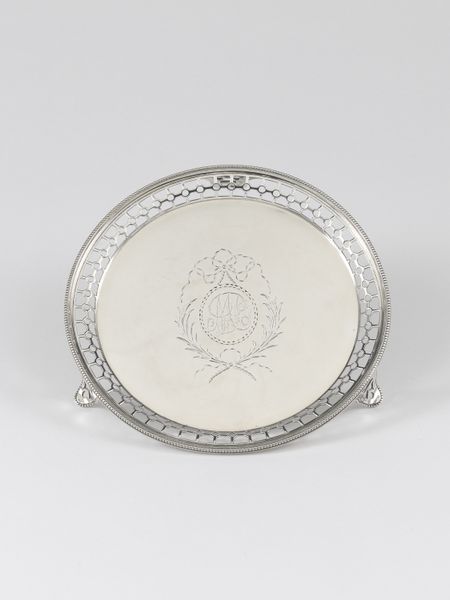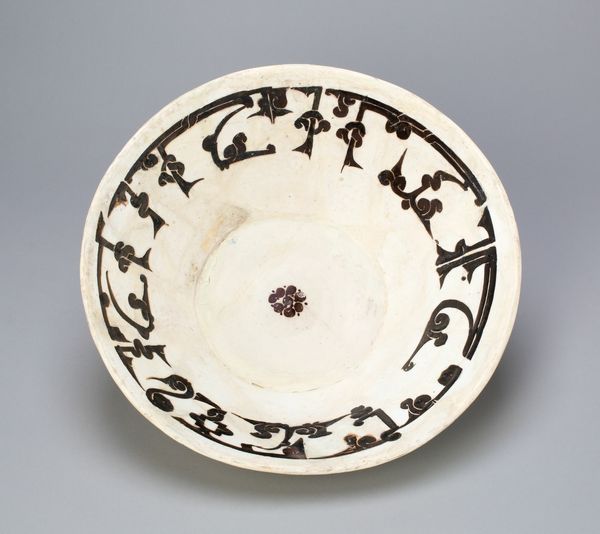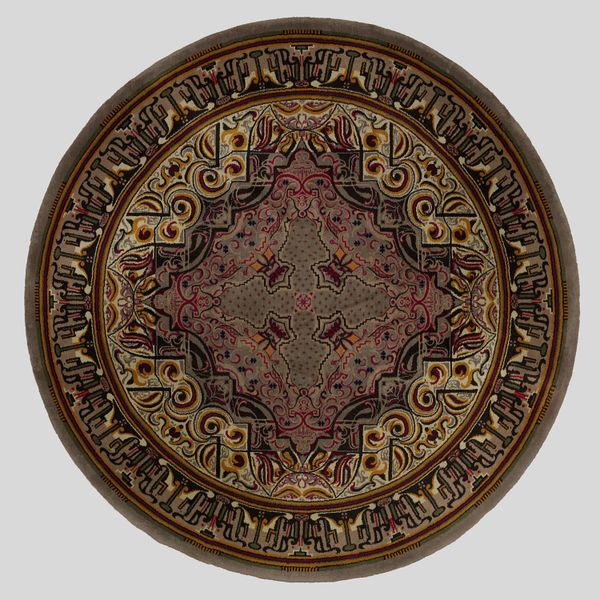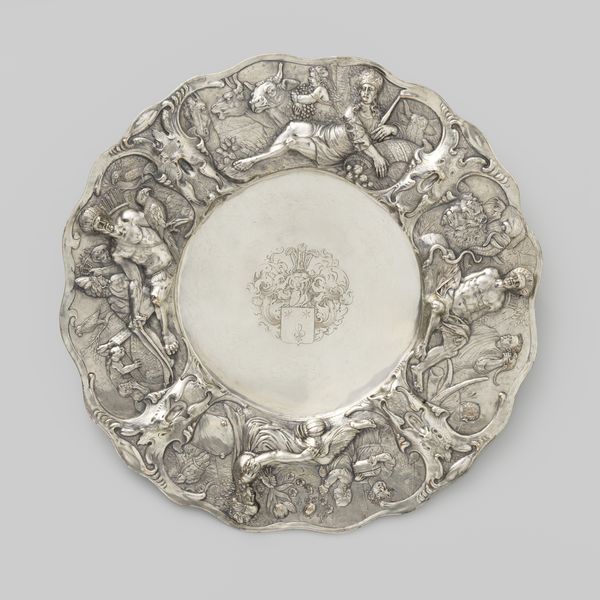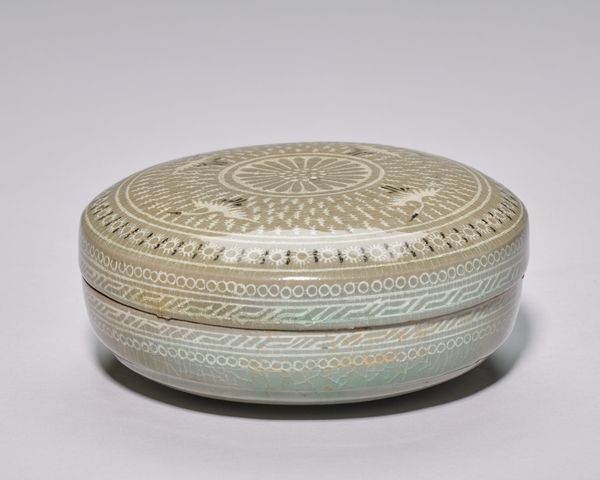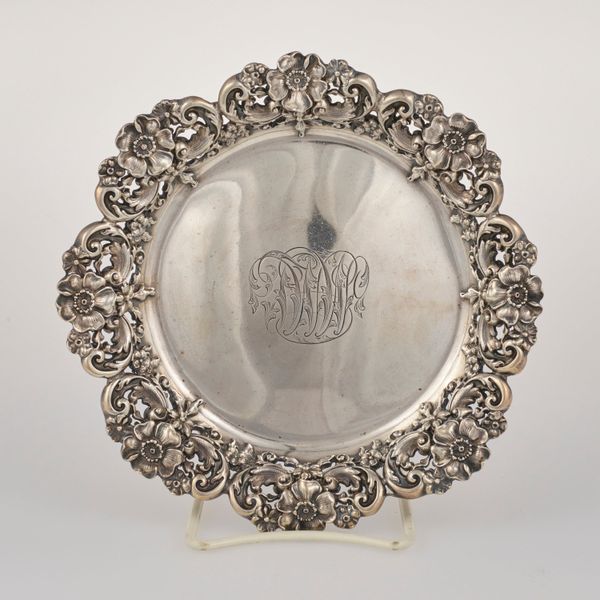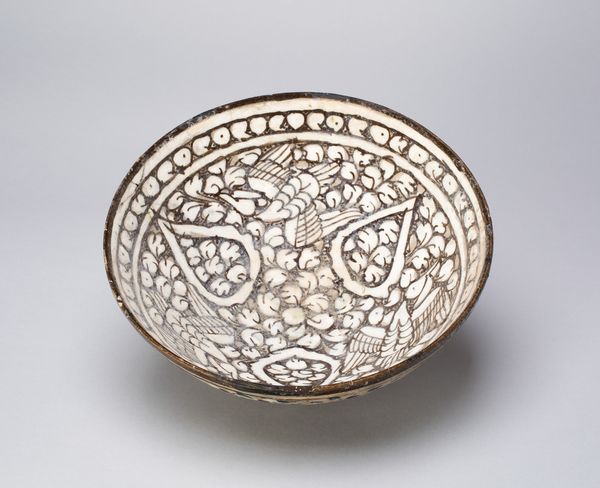
silver, metal, relief
#
silver
#
metal
#
relief
#
11_renaissance
#
ceramic
Dimensions: height 2.4 cm, diameter 9 cm
Copyright: Rijks Museum: Open Domain
Curator: Here we have a plaquette from a table ornament by Wenzel Jamnitzer, dating from 1549. The material appears to be primarily silver, rendered in relief. What are your initial impressions? Editor: The density of ornamentation makes quite an impression. The surface is alive with abstract scrolling and a stark contrast between polished metal and blackened recesses. A beautiful example of intricate metalwork, but is the effort worthwhile? I'm immediately interested in the social function. This object suggests a celebration of wealth. It appears to be a piece of tableware intended for use by the privileged elite, demonstrating mastery over precious metals. Curator: Exactly! The elaborate patterns that fill the negative space are quite mesmerizing. Notice the way Jamnitzer uses those recurring motifs—spirals, geometric shapes— to build visual connections and guide the eye around the plaque. How do you interpret these ornamental shapes? Editor: It is not just pure ornamentation but rather controlled symbolic messaging. I see subtle suggestions of power. Consider the shield shape, centrally located and boldly emphasized. Though left intentionally blank, it creates anticipation. Surely it was made to hold an engraved family crest or coat of arms. This object acted as an enduring display of personal and lineage authority. Curator: I'm struck by how efficiently the relief is executed. You've got deep shadows created by a master silversmith, and consider also the time investment that went into its creation. Skilled workshops specializing in silver like Jamnitzer’s employed entire communities of specialized artisans in Nuremberg. So while bearing a noble’s crest, this work actually bears many hands in its crafting, not just a single artist. It tells stories of labor. Editor: Yes, these types of objects are very intentional displays. Beyond family honor, the motifs selected, the shapes and placement speak volumes. I believe that for contemporaries of Jamnitzer, the piece itself may function like an elaborate hieroglyphic sign conveying wealth and standing. Curator: The piece’s history extends far beyond its production, it’s continued survival down to today’s setting at the Rijksmuseum suggests a long history of handling, care, preservation. This ornate object has itself been sheltered over the years by a diverse line of handlers. It's material and presence persist, quietly embodying power dynamics and labor. Editor: I'm leaving this brief viewing with an awareness that objects contain encoded symbolic value. What appears purely decorative is more about articulating power and status. A memory of those who wielded the symbols on that absent crest remains potent through the work itself.
Comments
No comments
Be the first to comment and join the conversation on the ultimate creative platform.
